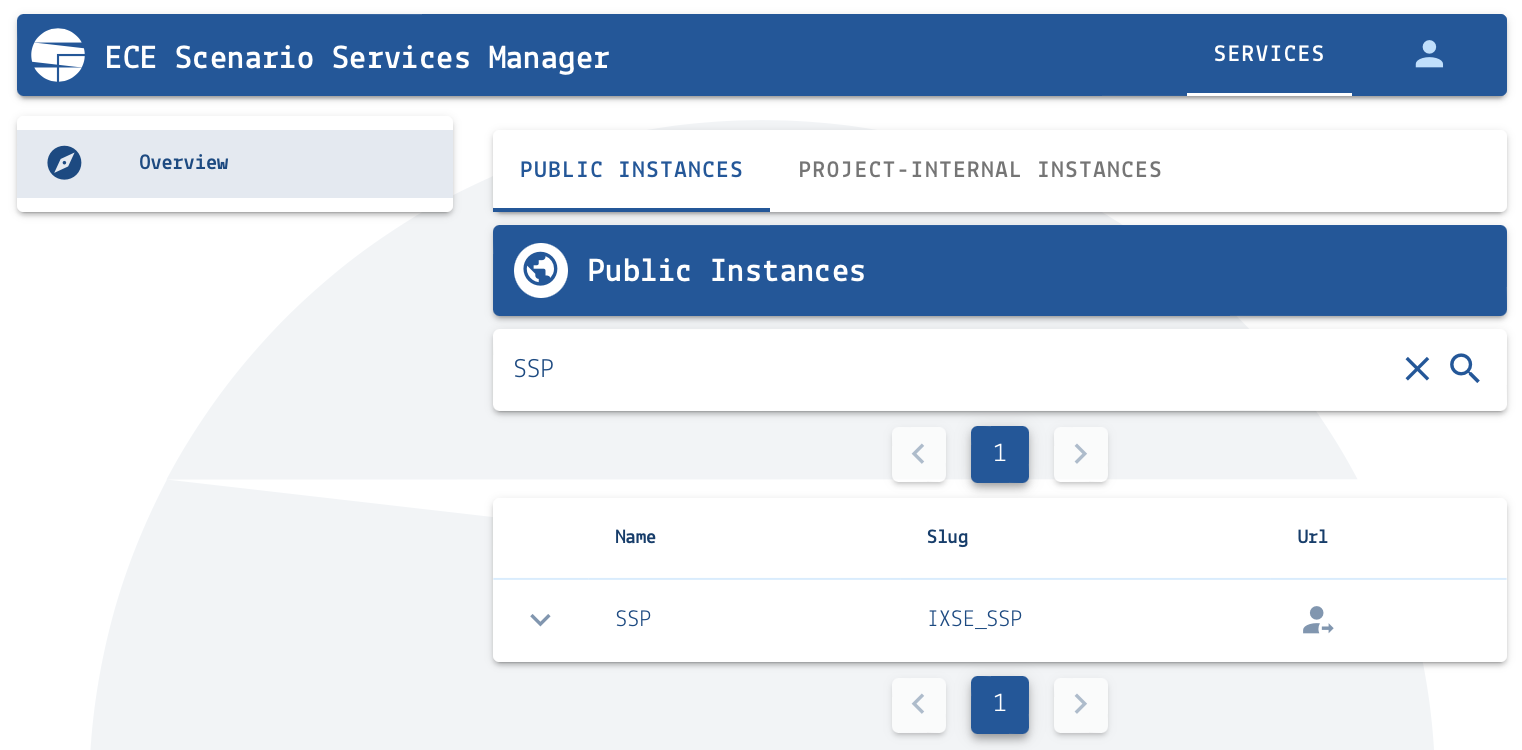Scenario databases hosted by IIASA
The Energy, Climate and Environment program (ECE) at IIASA is hosting many databases for the community to facilitate scenario analysis, model comparison and dissemination.
Access and permission management
There are public and project-internal (private) database instances or platforms. Access to project-internal platforms is managed via the Scenario Services Manager. To participate in a project, please create an account and send the username to the project managers by email.
You can see all public and private database instances to which you have access, including your view/submit/edit permissions, in the Services tab of the manager.

Screenshot of the “Overview” page of the Scenario Services Manager
Model registration
To participate in a model comparison project using the IIASA scenario database infrastructure, you have to “register” your model. A model registration requires three specifications:
A model name including a version number, preferably using semantic versioning
A list or mapping of region names as they will be submitted (uploaded) to an IIASA database instance by the modeling team, and how the region names should appear in the processed scenario data
A model mapping to perform region aggregation from native_regions to common_regions and renaming of model native regions (optional)
Option 1) Registration using an Excel template
If you do not feel comfortable using GitHub, please use the Excel template and send it to the project managers by email.
Option 2) Registration using a GitHub pull request
The preferred approach for model registration is starting a GitHub pull request. Please contact the administrators if permissions for the project repository are required.
Please follow the Model registration user guide.
Scenario version management
When submitting a scenario (a.k.a. “run”) to an IIASA database instance with an already existing model-scenario combination, the database will save the new submission as a new version of that run. The version number is incremented automatically and the new version will be automatically set as default version for that model-scenario name.
To select other (non-default) versions, you can use the “Switch to Advanced View” button
in the scenario-selection tab of an IIASA Scenario Explorer or you can use the
default_only=False option of the function pyam.read_iiasa()
or the ixmp4 package (read the docs),
see also the Section Database API.
Scenario processing
When submitting a scenario (a.k.a. “run”) to an IIASA database instance, the server executes a scenario-processing workflow including region-aggregation and scenario validation prior to saving the scenario to the database. The processing uses the nomenclature package (read the docs).
The region-aggregation and validation is configured via a project-specific GitHub repository, usually named https://github.com/iiasa/<project>-workflow. Please contact the respective project managers or the Scenario Services team if you need access.
You can also run the project workflow locally (on your computer) before submission to an IIASA database instance, to make sure that the validation and processing works. See Executing scenario processing locally for more information.
The workflow for processing files uploaded via the IIASA Scenario Explorer is implemented in a modular fashion. It is possible to execute programs, code and tools developed by (non-IIASA) research partners as part of the processing workflow if the tool follows the Requirements for processing modules.
Database API
You can query scenario data from an IIASA database instance directly via Python or R. Refer to the User Guide for Querying IIASA databases for more information!